|
|


The Ongoing Saga of Philodendron tortumby Julius Boos I recently made the trip down to Mr. Merkel's greenhouse and photographed his plants. I made some observations and notes which I will share with you all in the following. All of the large plants presently at Mr. Merkel's place appear to be of the broad-leaflet variety, some are large adults in bloom, others are small immatures from cuttings. I have been in contact with Denis Rotolante of Silver Krome Gardens in Miami, and he has informed me that all of his "starter plantlets" of this plant used to be obtained from a tissue culture facility called "Ceres 2000", located at Winter Haven in Central Florida. Denis believes that they are no longer in buisness, and I am having a friend of mine who lives in Lake Placid check around for any information on this lab. Since Mr. Merkel used to obtain his stock from Denis (not the other way around, as was my first opinion), it may be that this plant will no longer be available in commercial quantities once Mr. Merkel's stock is exhausted, so hold on to what you may have, friends! The large, mature leaves all consisted of between 10 and 13 divisons per side, this count excluded the final single apical segment and also the segments of what I deemed the 'posterior divisions'. These posterior divisions consisted of a group of segments divided into 3 sometimes 4 divisions, the shortest toward the sinus, the longest furthest away from the sinus. (I noted that the illustration in The Genera of Araceae, pg. 171, 'D', a fine-leafed P. tortum, also has the same count, 13-13, and the same kind of posterior divisions). The smaller/immature plants from cuttings demonstrated a much more "vining" habit, with about 4 to 5 visible internodes, each internode up to 4 to 5 inces long with no sign of the most distinctive claw-like structure at the leaf base, while the mature plants became very compact, some hardly showing any internode spaces, all with a very obvious "claw". The leaf blades of those immature plants demonstrated what must be some 'left-over' juvenile/seedling features, where the posterior division segments were wide and resembled other species of Philodendron, the segments were sort of lobe-like, much wider than in the adults and not very long. Larger but still immature plants also seemed to have thinner leaf segments which became much wider in adult plants (all were the wide-leaf variety). The mature plants were all in bloom, with up to four inflorescences in one leaf sympodium. The peduncles were up to 16 cm long (the largest) with a spathe tube of 5 cm and a spathe limb of 4 cm, the tube being longer than the limb. None were at anthesis, so I collected two which I will place in water and hope that they will mature and open, we can then compare these to the ones from a fine leaf division variety that Jim Langhammer has kindly photographed. The flowers from Mr. Merkel's plants were dissected and have been photographed, and proved to be identical to those photographed by Jim. It is interesting that both Jim`s plant of the thin-segment/fern leaf type and Mr. Merkel's broad-segment varieties are both in bloom at the same time, as well as Michael Pascall`s plant of this species in Australia. The flowers from Mr. Merkel`s plants were dissected and have been photographed, and proved to be identical to those photographed by Jim. I hope that this provides some information for those of us who have an interest in the true identification of this most interesting and attractive Philodendron species. Please click on the thumbnail images below for more information.
|
||||||||||||||||||||||||||||||||||||||||||||
All Images and Text © 1996 to 2025 by the International Aroid Society or by their respective owners as noted.
Please send your comments to
served by aws-web2

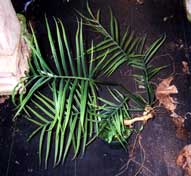
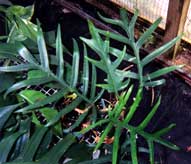
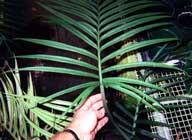
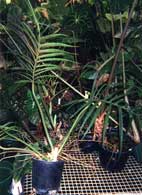


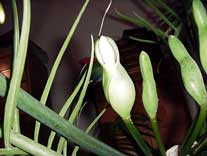
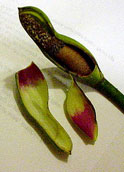
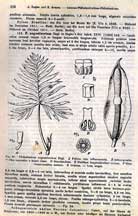

 This
page was created by
This
page was created by